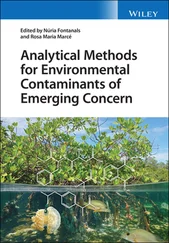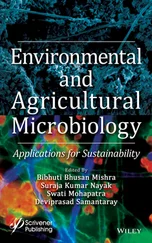1 ...6 7 8 10 11 12 ...17 3 Determine the Acceptable Quality Level or the Tolerable Safety RiskThe acceptable quality or safety level should be identified before sample size is determined. A supermarket chain importing strawberries may accept only a truckload that produces less than 1% moldy samples among all the samples analyzed. Determination of “moldiness” may be done subjectively (e.g., visual inspection) or analytically (e.g., fungi count on microbiological media). Note that the latter approach is time consuming, and the product could suffer significant quality damage while waiting for results to be obtained.Sampling for assessing food safety risks should be planned carefully. In addition to the factors discussed earlier, this sampling plan also should consider food status within the supply chain (e.g., raw or ready‐to‐eat), degree of processing (e.g., minimally processed or retorted), intended consumer population (e.g., infants or adults), and other factors. Analysts, for example, may be asked to determine the prevalence of Salmonella enterica on the surface of raw shell eggs produced in a cluster of farms that switched from a caged to a cage‐free or free‐range hen system. In a different scenario, analysts may be sampling for S. enterica in pasteurized shell egg from a company that introduced pasteurization as a new technology in egg processing and compare that with normal incidence of S. enterica in raw shell eggs. Although the food product and the targeted pathogen is the same in both examples, some pathogen‐positive samples are allowed in the first example (on‐farm), but none is allowed in the second example. Zero tolerance is common for infectious pathogens in ready‐to‐eat foods, whereas some degree of contamination is allowed in raw foods that are supposed to be cooked or processed before consumption.
4 Determine the Number of Samples to be WithdrawnOnce acceptable quality level or tolerable safety risk is considered, sample size should be determined. Sample size is determined by a statistical approach called “power analysis.” For explanation, let us consider the first of the two examples presented earlier: the contamination of raw shell eggs surfaces with S. enterica. The analysis can be viewed as a comparison between two groups: caged versus cage‐free products. To estimate the appropriate sample size for this experiment, a systematic approach needs to be followed.Define the hypothesis to be testedNull hypothesis: The rate of incidence of Salmonella in the two groups do not differ.Alternative hypothesis: The rate of incidence of Salmonella in the two groups is different.Determine the statistical parameters needed to calculate sample sizeSignificance level (α). This parameter is commonly set at 0.05 (i.e., 5%). It is the possibility of falsely rejecting the null hypothesis (Type‐I error), i.e., the “false positive” rate. In other words, with this α value, there is a 5% chance to conclude that there is a difference, while in fact there is no difference. The smaller the value of α, the larger the sample size needed to produce statistically meaningful experiments.False‐negative rate (β). The chance of failing to reject the null hypothesis when the alternative hypothesis is true (Type‐II error). The commonly used values of β are 0.1 and 0.2 (i.e., 10% and 20%). The smaller the value of β, the larger the sample size needed to produce statistically meaningful experiment.Power of the experiment (1‐β): Once β is selected, the power is determined. Power is the probability that the analysis can detect a difference between the two groups, when this difference is truly present. Although it is always desirable to have a high power, 1‐β is often set at 0.8 (80%) to make the sample size manageable.Effect size: A meaningful effect size should be considered. In the example above, one may assume that if the percentage of Salmonella‐positive eggs from the less‐infected hen group is 10% (p 1 ), the more infected group should produce Salmonella‐positive eggs at the rate of 20% (p 2 ) or more, for the difference to be meaningful. Additionally, if 1‐β is chosen to be 0.8, it means that we have 80% chance of detecting the stated difference between these two groups. Note that the smaller the p 1 and p 2 values, the larger the size of sample needed to produce statistically meaningful results.Population standard deviation: This is needed for continuous data, such as changes in pathogen populations. However, in the example described above, the variation between the two groups is not continuous, it is dichotomous (i.e., results reported as Salmonella‐positive or Salmonella‐negative) and expressed as incidence rate or proportion. Therefore, determination of standard deviation is not relevant to the example presented here, but it will be needed for other types of analyses.Calculate sample sizeThe information collected so far is sufficient to determine sample size per group, i.e., number of eggs to be tested for S. enterica for each of the two hen groups. Based on this information, α = 0.05, 1‐β = 0.8, p 1 = 0.1, and p 2 = 0.2. These values can be entered in an appropriate statistical equation (e.g., Dell et al., 2002) for calculating sample size. Alternatively, commercial statistical programs (e.g., Minitab or SAS) contain modules that automate the sample size calculation once the above parameters are determined. In the example at hand, 218 eggs for each of the two groups need to be analyzed to determine if incidence of this pathogen is different in the two groups of hens. The sample size in this example is quite large because of the small rate of contamination of S. enterica on eggs. The rate of incidence of the pathogen inside the egg (i.e., in the yolk) is even smaller and thus requires much larger sample size to detect any differences between the two groups.
It should be obvious from the previous discussion that sample planning is not limited to size determination. The plan should be tailored to address food characteristics, reason for sampling, lesson to be learned or action to be taken, and other factors. Food inspection, mandated by regulatory agencies, should be based on sound sampling plans considering the health and economic impact of the outcome of the analysis. The frequency of inspection and sampling may depend on the quality or safety history of the food produced or processed by a given establishment. Inspection and sample collection are minimized for establishments with a recent history of producing good quality food or food that posed no or low safety risks. Therefore, a vendor’s recent history should be considered when developing a sampling plan.
SAMPLING TECHNIQUES AND SAMPLE PREPARATION
Sampling Tips
After developing the sampling plan, actual sampling should be carefully executed. The following are some tips to be observed during withdrawing, handling, and transporting of samples.
Collect Laboratory Sample in Original Container and Repackage Only if Necessary. Samples are ideally submitted to the laboratory in the original unopened containers. In case of bulk food, or when the original container is too large for submission to the laboratory, a subsample is aseptically transferred to a clean, sterile container.
Use Sterile Sampling Utensils. In the event of repackaging, suitable sterile plastic or metal containers are preferable over glass containers. These containers must be clean, dry, leak‐proof, and of a size suitable for the sample. Sampling tools such as forceps, spatulas, and scissors should be appropriately wrapped and autoclaved prior to use.
Label Samples Appropriately and Create a Sample Record. A proper label should be developed to identify sample contents, date of sampling, sample collector’s name, and other pertinent information (e.g., sample temperature or storage conditions, and type of package from which subsample was taken). The simplest form of labeling is using masking or labeling tape, on which information is written with a permanent marker; this is preferred over writing directly on sample container. In addition to the information on the label, a record should be created to document additional pertinent information, such as the times of collection and of arrival at the laboratory, condition of sample at the time of arrival, etc. In some food inspection agencies, the label on the sample package is replaced with a barcode that is linked to a record in an electronic database.
Читать дальше












